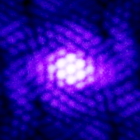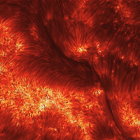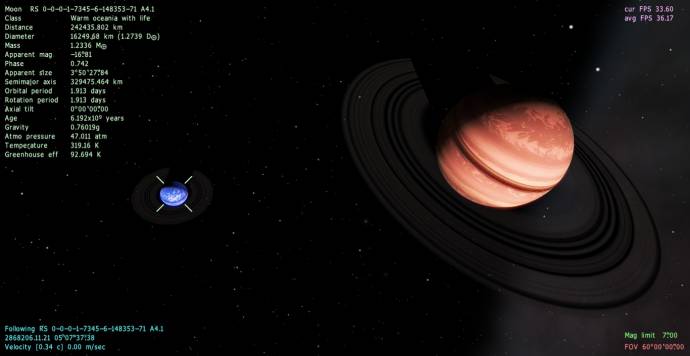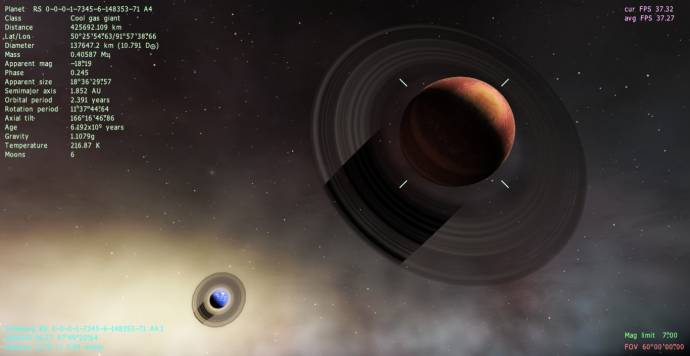|
Unrealistic Ring Systems
|
|
| DeathFromBelow | Date: Sunday, 16.09.2012, 17:57 | Message # 1 |
|
Observer
Group: Newbies
 United States
United States
Messages: 9
Status: Offline
| I've noticed a lot of moons with rings like this lately:

89 Her 4's mass is ~4x Earth. The moon 89 Her 4.1 is .3 Earth masses and it's orbital period is about a day. I've also seen binary planets where one or both has rings despite the close orbit. Wouldn't tidal forces make rings physically impossible?
Sorry if this is a known issue.
|
| |
| |
| DoctorOfSpace | Date: Sunday, 16.09.2012, 19:02 | Message # 2 |
 Galaxy Architect
Group: Global Moderators
 Pirate
Pirate
Messages: 3600
Status: Offline
| Quote (DeathFromBelow) Wouldn't tidal forces make rings physically impossible?
On human time scales no. If a large object passed between the two and was caught in orbit it could break up and form rings, they wouldn't be permanent as the same tidal forces would cause an unstable orbit.
However you wouldn't see such pronounced and large complex multilayer ring systems, it would be more one or two lines of clumped rock and dust.
I am only basing what I say off computer simulations on ring formation so it may not be correct.
Intel Core i7-5820K 4.2GHz 6-Core Processor
G.Skill Ripjaws V Series 32GB (4 x 8GB) DDR4-2400 Memory
EVGA GTX 980 Ti SC 6GB
|
| |
| |
| DeathFromBelow | Date: Monday, 17.09.2012, 23:48 | Message # 3 |
|
Observer
Group: Newbies
 United States
United States
Messages: 9
Status: Offline
| Quote (DoctorOfSpace) On human time scales no. If a large object passed between the two and was caught in orbit it could break up and form rings, they wouldn't be permanent as the same tidal forces would cause an unstable orbit.
However you wouldn't see such pronounced and large complex multilayer ring systems, it would be more one or two lines of clumped rock and dust.
I bought the game Universal Sandbox just to test this out. You seem to be right, the rings are within the hill sphere of Her 4.1... the universe is even cooler than I thought.  Maybe the smooth Saturn-style rings should be more rare for moons? Maybe the smooth Saturn-style rings should be more rare for moons?
I'm interested in knowing just how long rings would be stable in situations like this or close binary planets. How exactly do you calculate it?
|
| |
| |
| Watsisname | Date: Tuesday, 18.09.2012, 00:44 | Message # 4 |
 Galaxy Architect
Group: Global Moderators
 United States
United States
Messages: 2613
Status: Offline
| I found it surprising, too, but the math actually shows the ring system would be stable.
The radius of the Hill Sphere is approximately equal to a(1-e)(m/3M)1/3, where a is the semimajor axis of the smaller body, e is its eccentricity, m is its mass, and M is the mass of the more massive body that it orbits.
Assuming that 89 Her 4.1 has an eccentricity of 0 (circular orbit), then the ratio of the Hill Sphere radius to the orbital distance is about 0.3. To put that in context, that's about 5x the moon's radius, or ~20,000 kilometers. Larger than I'd have thought!
Disclaimer: I'm actually not sure if this formula works well for the case of m and M being similar in mass (unlike, say, the Earth and Sun which differ in mass by a factor of 300,000!), but I presume it does since DeathFromBelow states the rings of this system are stable in Universe Sandbox. Always good to see theory supported by numerical simulation. 
edit: Also, regarding how the rings would fare over the longer-term, I'm afraid I don't have any idea. I suspect that the ring particles would tend to shift into more eccentric orbits due to the perturbation from the nearby planet, but beyond that I can't say. Best way to find out would probably be through modelling. Do you know how frequent the integration times are in Universe Sandbox, and how far into the future can you simulate the system?

Edited by Watsisname - Tuesday, 18.09.2012, 01:10 |
| |
| |
| Solaris | Date: Friday, 28.09.2012, 02:02 | Message # 5 |
 World Builder
Group: Global Moderators
 France
France
Messages: 731
Status: Offline
| What about :


I've saw lots of ringed moons in SE, but none that close, and I wonder if such a ring system can happen in real (as close.), will the tidals forces also break it? Distance between the two objects is ~321591km.
|
| |
| |
| Watsisname | Date: Friday, 28.09.2012, 08:26 | Message # 6 |
 Galaxy Architect
Group: Global Moderators
 United States
United States
Messages: 2613
Status: Offline
| The Hill sphere for that Oceania moon is 48,300km, or just under twice as far as its rings extend. That's actually a very small margin -- those ring particles would probably follow fairly chaotic orbits. Maybe I'll pull up Gravitation3D later and see what a few test particles in circular orbits do in that situation.
I'm also curious what the gravity of the Oceania would do to the rings around the gas giant; I imagine having a 1.2 Earth-mass moon just beyond them must influence them significantly.

|
| |
| |
| Watsisname | Date: Friday, 28.09.2012, 11:33 | Message # 7 |
 Galaxy Architect
Group: Global Moderators
 United States
United States
Messages: 2613
Status: Offline
| Well here's a preliminary test of that system done in Gravitation3D.

This is using accurate physics and parameters for the Gas Giant and Oceania, and is simulated over the span of one orbit for the Oceania. The Red disk is the Gas Giant, the Blue path is the Oceania, and the green paths are test particles with initially circular-orbital velocities relative to the Oceania. These test points are initially spaced at 10, 15, 20, 25, 30, and 35 thousand kilometers from the Oceania's center. After one orbit, you can see that the two outermost test particles escaped, while the other four maintained orbit for the duration. This suggests that the true range of stability is probably between 20 to 25 thousand kilometers -- about half of what the Hill Sphere calculation gives. Amusingly, the rings shown in Space Engine go out almost exactly the same distance -- 25 thousand kilometers. 
Edit: Made a few additions and ran the simulation over a longer period, and now you can really see the zones of stability versus instability. (Also don't mind the change in planet size -- I had the scaling wrong the first time.)

The Gas Giant rings are simulated at 100, 150, 200, and 250 thousand kilometers, the last one in purple. Right away you can see that all of the particles shift into more eccentric orbits under the influence of the Oceania, and the purple particle farthest out gets flung into a chaotic orbit. Eventually it will either crash into one of the planets or be ejected from the system.
The Oceania's rings are shown at 10, 15, 20, and 25 thousand kilometers, the last in pink. After a few of the Oceania's orbits the pink one gets ejected and starts orbiting the Gas Giant in a similarly chaotic orbit.
I know, I'm a nerd. I find this sort of thing fun. 

Edited by Watsisname - Friday, 28.09.2012, 13:17 |
| |
| |
| Solaris | Date: Friday, 28.09.2012, 21:03 | Message # 8 |
 World Builder
Group: Global Moderators
 France
France
Messages: 731
Status: Offline
| Thx for this very interesting answer Watsisname! I'm on my way to try Gravitation3D 
|
| |
| |